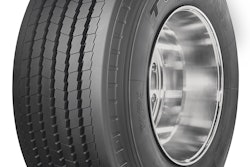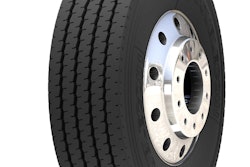For the skeptic customer still on the fence, the financial benefits of retreading are an excellent closing argument. Retread tires are significantly less expensive than buying 18 new tires every 200,000 miles.
Harvey Brodsky, managing director at the Retread Tire Association (RTA)says most standard commercial vehicle tires can be retreaded for less than half the costs of a new tire. “You have to do the math. When you add up the costs of both you’d have to be crazy to not even consider retreading,” he says, noting most major North American fleets have long established retreading programs.
Randy Gaetz, vice president of sales at Toyo Tires, says Toyo doesn’t have a retreading facility but all of its commercial vehicle tires are designed to be retreadable. Weller says his company has a similar strategy, and both companies offer a casing warranty to ensure customers their new tires will be able to be reused.
That retreadability is an important factor in fleet buying strategies, says Alex Chmiel, director of marketing at Continental Commercial Vehicle Tires. Chmiel says most Continental fleet customers purchase new tires with retreading in mind.
“It’s interesting; fleets are starting to view casings as an asset rather than an expense,” Walt Weller, vice president at CMA, producer of Double Coin commercial tires, says.
Brodsky notes that’s an important aspect for customers to maximize the financial benefits of retreading. Tires must be maintained.
“You have to take care of the tires you have” so you can use them again, he says.
Chmiel agrees, noting a properly maintained casing can be retreaded “numerous times before it reaches the end of its service life.”
Together all of these aspects make retreading an excellent business strategy for today’s fleets and owner operators.
“Downtime is money. Fleets make money by working, not waiting,” says Phil Boarts, product category manager, retread at Michelin Truck Tires. “The retread process is successful because it allows fleet’s to manage their tires economically and efficiently.”
Walenga says those are advantages tire dealers and distributors should actively pass on to retreading holdouts.
“I think skeptics would really be amazed at how good these tires are,” he says.
This is an excellent selling point for customers focused on green technology — such as municipalities.
According to Todd Labbe, general manager, commercial retread at Goodyear Commercial Tire Systems, 22 gallons of oil are required to produce new truck tire but only seven gallons are needed to produce a retread. And because a well maintained casing can be retreaded multiple times, that savings can be doubled and tripled over the life the retread.
“Retreading a truck tire casing extends the tire’s life, which means fewer tires enter landfills,” he says.
And this benefit isn’t new to the industry. Weller says retreading has been providing these benefits for decades.
“Retreading was the original green technology,” he says.
Most major retreading companies also sell or reuse old treads to be recycled and used for other products, Brodsky says. Eventually all casings must be disposed of, but Brodsky says retreading makes sure a casing is used to the end of its useful life before being dumped.
“Today’s casings are built durable enough that they can be retreaded again and again before the casing finally fatigues,” says Gaetz.
Retread tires may “look round and black but in fact they are very green,” says Brodsky.










